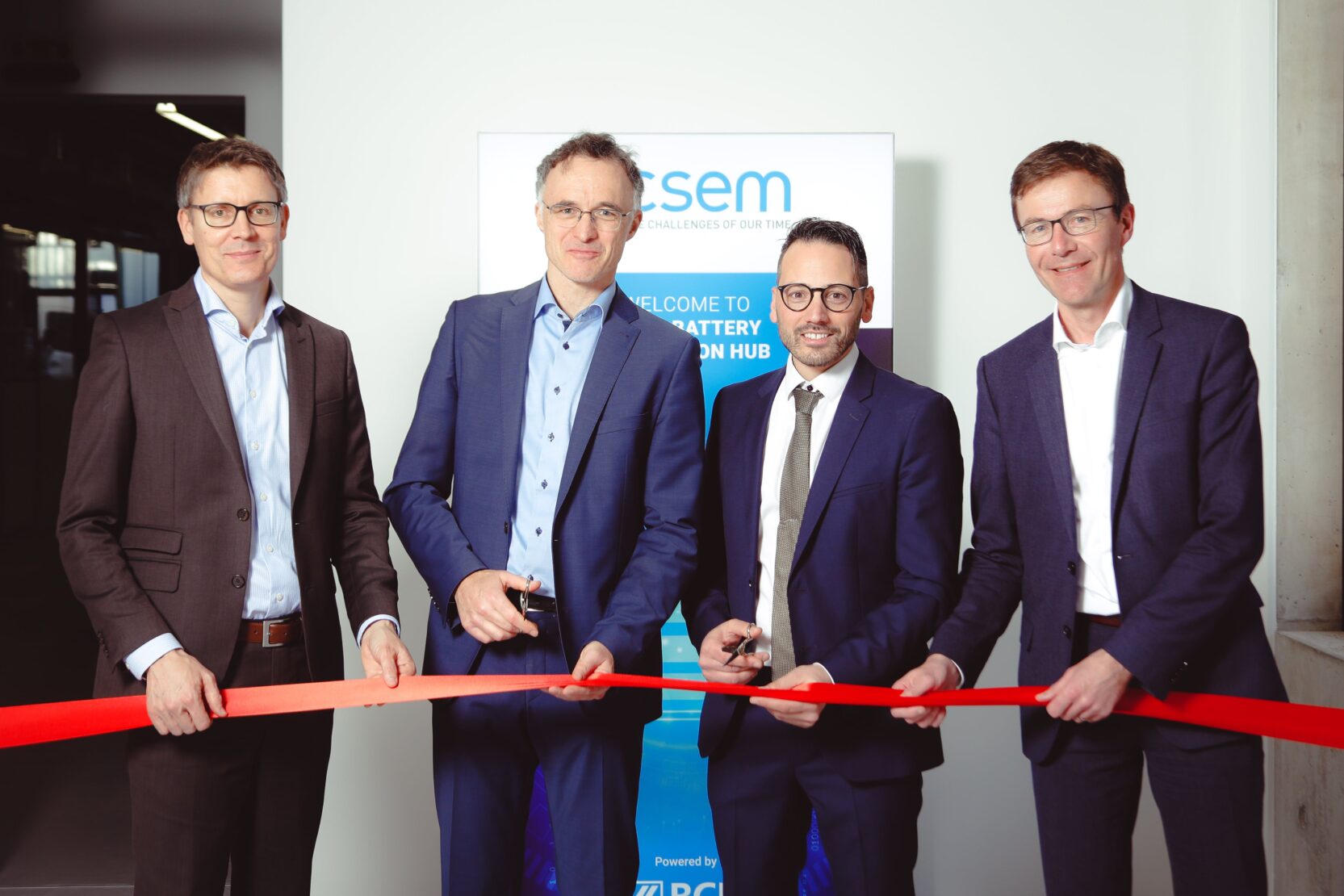Tokyo (SCCIJ) – The Swiss Center for Electronics and Microtechnology (CSEM) has inaugurated its new Battery Innovation Hub (BIH) in Neuchâtel. Here, interdisciplinary teams are working in close collaboration with local companies on the “battery of tomorrow”. This facility is the only one of its kind in the country – and is, therefore, an important guarantee for Switzerland’s competitiveness.

Battery Innovation Hub inauguration: (from left to right) Alexandre Pauchard (CSEM, CEO), Andreas Hutter (CSEM, Group Leader Energy Systems), Andrea Ingenito (CSEM, Group Leader Sustainable Energy), and Pierre-Alain Leuenberger (Neuchâtel Cantonal Bank, General Director) (© CSEM).
Global battery race
As a major supplier to the European industry, particularly its automotive sector, Switzerland must gear up for the electric future and reposition itself. Batteries will also play an increasingly important role in managing electricity networks.
To support the Swiss industry in this transformation, CSEM, together with the Cantonal Bank of Neuchâtel, has therefore extended its research priorities to the world of batteries.
Asia currently produces 90% of the batteries used globally. “Europe must no longer remain in this state of dependency. In Switzerland, we also have the skills to be at the forefront of battery development and innovation,” explains Andreas Hutter, Group Leader of Energy Systems at CSEM.
Interdisciplinary teamwork
Thanks to the new Battery Innovation Hub, interdisciplinary teams from fields of chemistry, physics, and engineering in various disciplines, among others, will be working on the important topic of batteries at a site measuring 400 square meters.
What’s more, by 2026 more than 50 people should be working in this center with a unique scope of action based in Switzerland. Indeed, by combining the development of new chemistries and interfaces with the analysis and intelligent control of batteries, CSEM is, for the first time, covering the entire value chain under one roof.
Project pipeline
An important intermediate objective of this work will be to create the next generation of batteries. “Our challenge is to develop disruptive technologies that make batteries more powerful and durable, with improved safety and ideally lower cost to make the European industry more competitive,” says Andrea Ingenito, Group Leader of Coatings for Energy Devices at CSEM.
To achieve this, CSEM experts are working both on direct battery improvement, for example by modifying the properties of the interfaces inside batteries, and on battery management via electronics that ensure safe operation, where a combination of non-invasive detection and local control guarantees optimal aging and longevity of the systems.
Thanks to the greater number of charge cycles that can be used, and the ease of recycling, the ecological impact and cost of batteries are minimized, while increasing safety. However, CSEM’s mission to act as a bridge between academia and industry goes even further. “This transfer of knowledge and technology can enable local companies to open up alternative paths and use their expertise in the promising new battery environment,” explains Andreas Hutter.
Text: CSEM (editing by SCCIJ)





























